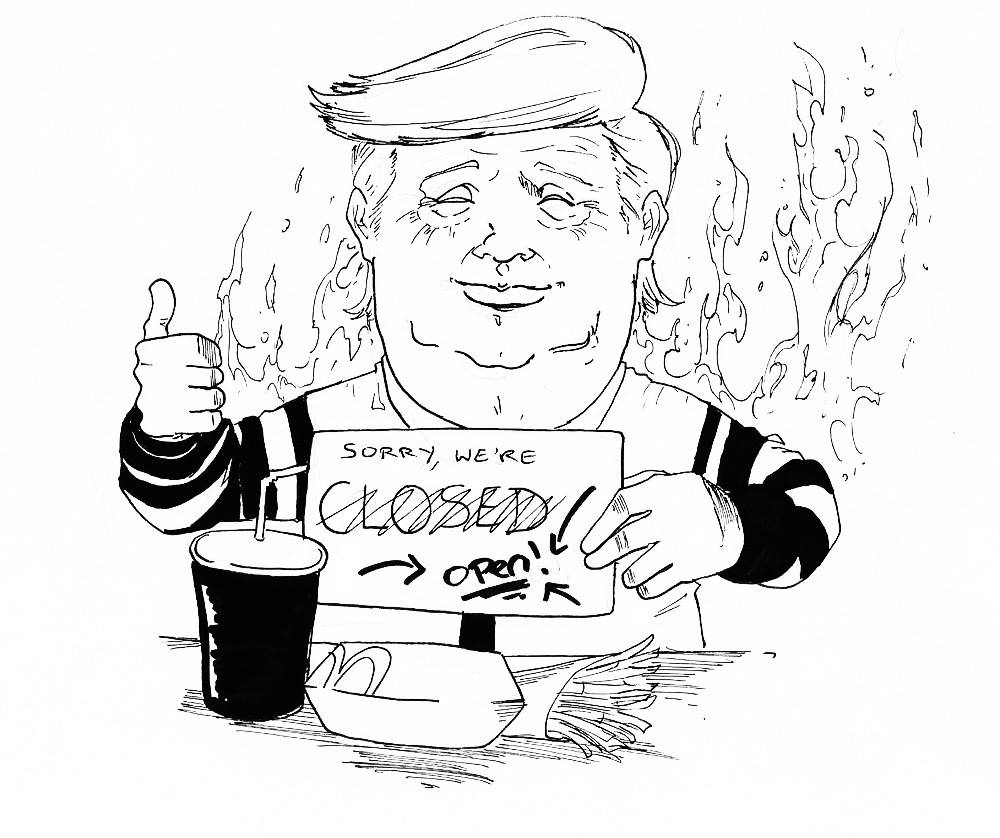While gridlock has become a mainstay of Congress, the concept of a government shutdown may be alien to some readers unfamiliar with American politics. For federal agencies, departments and other ‘non-essential’ services to run, Congress must agree on a spending bill that allocates money for employees and specific projects. The president must then sign the spending bill into law, or veto it and send it back to congress to be rewritten. If a president and the legislature have disparate views on how federal money should be spent, a spending bill that satisfies both parties may not be implemented in time before parts of the government are essentially left unfunded. This means that ‘non-essential’ employees are furloughed, while some essential workers such as airport security personnel are told to continue working but without pay. Though government shutdowns have happened before, the one just ‘temporarily ended’ by President Trump has since beaten the record. Over 800,000 federal employees went for 35 days without pay, and another shutdown seems likely to flare up again as the fight between President Trump and congressional Democrats draws on.
The shutdown was essentially caused by the President’s insistence that congress ear-mark 5.7 Billion USD for a physical border wall between the United States and Mexico. The Democrats, having recently regained control of the House of Representatives, vehemently oppose this level of spending on a project they deem futile at best and outright racist at worst. There have been few meetings with the President and congressional democrats. One of these meetings ended in the now infamous walk-out of the president after negotiations failed. The President’s supporters view the wall as an integral part of Donald Trump’s 2016 campaign platform. Though during his campaign, Mr. Trump had frequently stated that Mexico would end up footing the bill. More moderate Republicans would rather focus on a modernised approach to immigration, targeting those who enter on legal visas but then remain illegally in the country. Democrats labelling themselves as progressive see the wall as a non-starter, and as a manifestation of the right-wing populism that President Trump has brought to the executive branch. More moderate democrats however are not as keen to outright deny the construction of border protection infrastructure or the deportation of illegal immigrants. During Obama’s eight year presidency, large-scale deportations as well as fence construction were aspects of the administration’s immigration policy. In the wake of Trump’s victory in 2016, immigration has become increasingly partisan, in so much that neither party wants to cede ground to the other, in a move that could potentially rile their newly energised electorate.

Despite reopening government on the 26th January, Mr Trump has issued a warning that another shutdown, or a ‘state of national emergency’ will be declared if he does not receive the funds for his border wall. Speaking outside the White House the President declared “we really have no choice but to build a powerful wall or steel barrier. If we don’t get a fair deal from Congress, the government will either shut down on 15 February again, or I will use the powers afforded to me under the law and the constitution of the US to address this emergency.”
Though conservative pundits and right-wing talk show hosts continually pump out anecdotes and speculations about voter reaction to supposed capitulation to the Democrats, polling data suggests that the majority of Americans blame the shutdown on the President and view his party as at least complicit. The President is known to ignore party messaging to pursue what his personal goals of his presidency, and a wall between Mexico and the United States is certainly one of those goals.
